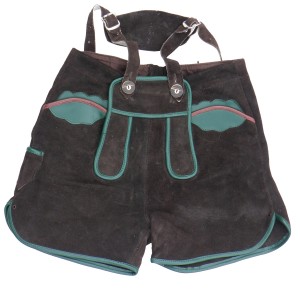Oktoberfest celebrations hit Los Angeles
The first week of October marks the beginning of Oktoberfest, so it’s time to pop open the beer, heat up the grill and try not to embrace a watered-down cliché of a good holiday.
The United States has an unfortunate habit of taking traditional holidays and turning their themes into excuses to get drunk on low-quality alcohol. Think Cinco de Mayo, which people incorrectly think is the day of Mexican independence and celebrate with sombreros and tequila shots. Or St. Patrick’s Day, where everyone’s suddenly Irish and poor souls decide to drink green beer.
So what to do about Oktoberfest, Bavaria’s 16-day-long celebration of beer? The festival ends soon, so whether you’re playing catch up for the missed days or want to try for a more authentic approach, try this out.
First, there’s the beer. Oktoberfest is, after all, a festival for beer. To celebrate properly, it’s best to avoid the lowest of the low. Cheap, watery and weak brews like Coors or Keystone are not suited for this kind of event. Instead, branch out and try something new.
Traditionally, marzen is the beer for Oktoberfest. It’s a specific style that adheres to German beer purity laws and has a unique flavor profile. It’s a lager, so it’s not too heavy, allowing room for food or another few steins. It also creates an interesting mix of malt with a hint of bitterness from the hops that doesn’t override the rest of the flavor. Essentially, it’s a well-rounded beer perfect for the start of autumn, whether you’re celebrating in Munich or Los Angeles. Chances are any Oktoberfest-labeled beer will be a marzen.
If you can’t wait, don’t give up: Just stick with German beers. The focus is on lagers and wheat beers. These are light enough to work with the rest of an Oktoberfest feast. The Weihenstephaner hefeweissbier is an amazing version of a hefewiezen, adding a sweet honey flavor to balance out the wheat taste. There is also a wide variety of German pilsners that are good for the task at hand.
If you prefer heavier, darker beers, there is an alternative: schwarzbier, or black lager. These brews weave the chocolate and roasted flavors more commonly found in stouts and porters with the body and strength of lagers. They’re crisp, not too light, and go well with richer foods.
Los Angeles is a multicultural urban sprawl, and there are places around the city that offer plenty of options to celebrate the festival. Würstkuche, located between West Los Angeles and Little Tokyo, offers a large selection of sausages and German brews and offers the best bet for a night out. Other great beer spots include SmithHouse at Santa Monica and Beverly Glen boulevards. It’s more of a traditional American grill, but it does have more than 150 beers available, including German brews — and the food is quite good.
As with any celebration, Oktoberfest’s food is appropriately decadent. That means lots of meats, hearty sides and more. Mostly, that meat is sausage, so prepare for lots of different kinds of wursts. Be generous with sauerkraut as a side when you load up your plate.
If you can’t go out, try cooking an Oktoberfest feast for friends. It does involve some labor, but the end result will be mounds of rich, tasty food. Try cooking up a pork roast or sizzling sausages on a grill. Boil some potatoes as a side, and be sure to have sauerkraut on hand to be a tart complement to it all.
Marzen is known for being sweet and malty, so the kind of food that complements it needs to be rich as well. When cooking, be sure to go heavy on spices. Vegetarian? Grill up a lot of fall and winter vegetables with herbs and olive oil and enjoy.
Celebrating Oktoberfest doesn’t mean putting on lederhosen and running around like a bad caricature. Nor does it mean using the holiday to drink the same low-quality drinks you would any other time of year, followed by late night fast food. Instead, try to add a bit of authenticity to your celebration. When done right, a good celebration becomes great.
